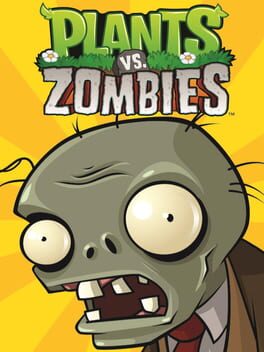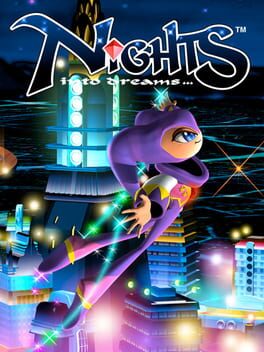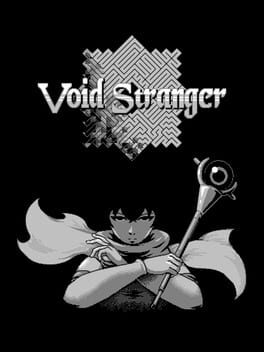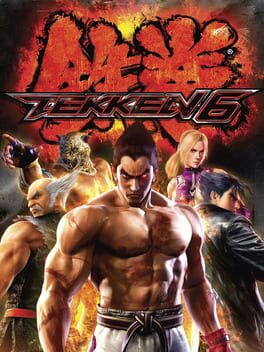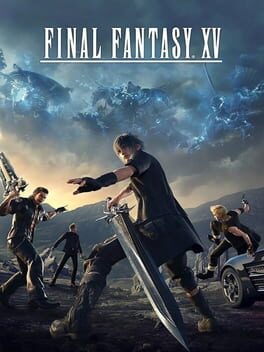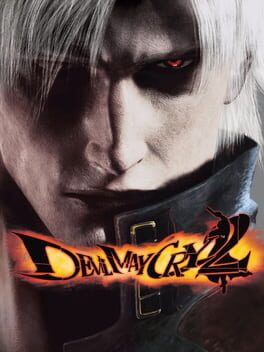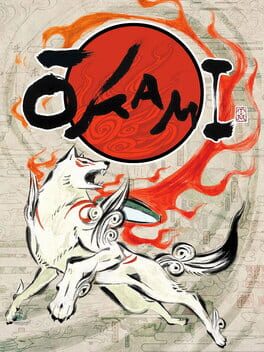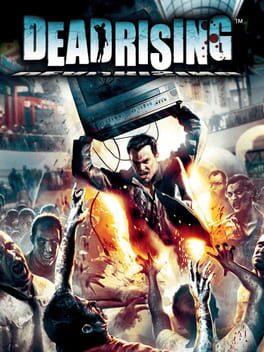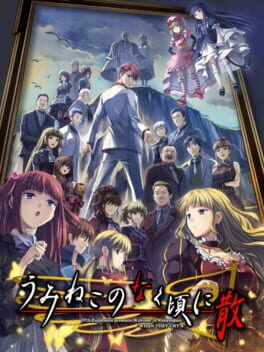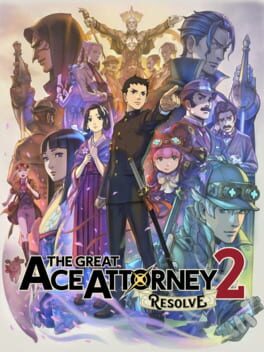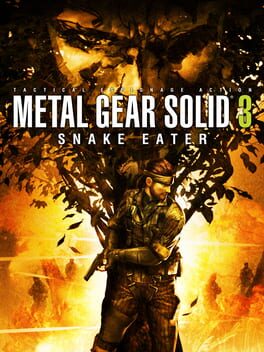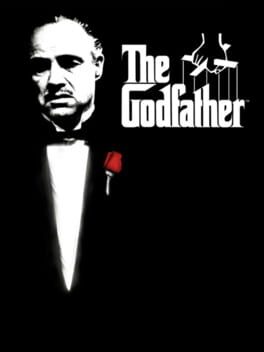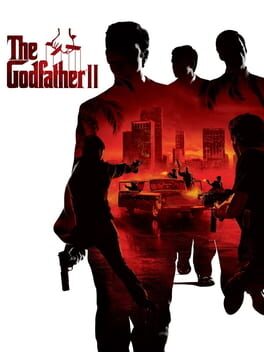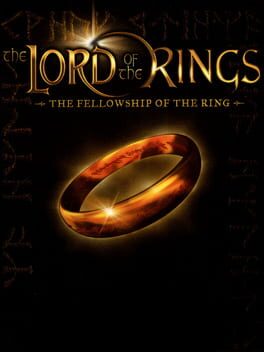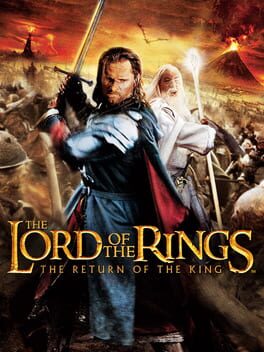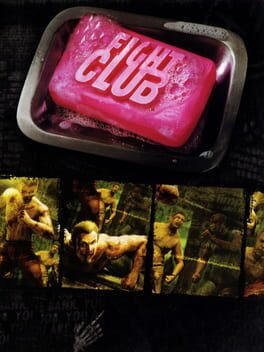rebarnd
50 reviews liked by rebarnd
Plants vs. Zombies
2009
the threepeater is a plant in this game, which shoots in three lanes. the lane above, the lane its on, and the lane below, right? the threepeater has three heads, each one layered vertically in order to make them visible to the player. whenever a zombie is within one of the three lanes, it fires, and each of it's heads bob in order to show the action and give it a bit more life, as all the plants do. however, if you place the threepeater at the top or bottom lanes - lanes which it cant possible shoot all three - the top or bottom heads respectively wont bob when the threepeater fires, as it's not firing in those non-existant lanes, while the others still will. this game is 5 bucks on steam in case youre wondering
One really cool trend we saw back in the last decade is formerly underground franchises breaking into the mainstream. Persona, Yakuza, Monster Hunter, Fire Emblem, and Xenoblade all had dedicated followings before but are now bringing in more fans than ever. Among these is Balan Wonderworld which blew people away with its frenetic action, deep characters, and philosophical storytelling. Its success led to many people checking out the game’s predecessor, Nights: Into Dreams. And let’s just say that the early installment weirdness is strong with this one.
The biggest issue with Nights could be summed up in four words: Creative ideas, Weird execution. Nowhere is this more evident with the game’s main protagonist Nights. Nights is a character we are supposed to straight up despise. You’re supposed to see them as a mass murdering psychopath. They’re supposed to be the embodiment of the player who kills all the clearly sapient enemies to power up and show what that person who actually be like. In other words, they were the original Chara. Heck, they even got the same pronouns. The game really wants you to hate them and constantly has the other characters as well as the very narration itself call them out.
(Clip of Elliot saying “Full of bloodlust, as always.)
But the problem is that nearly every one of Nights’s murders are completely justified. The game seems to forget the fact that Nights is a soldier fighting a war where the other side wants to destroy seals to release an eldritch abomination upon the world. Also, the enemy soldiers are almost always portrayed as nothing more than simple video game enemies for you to kill. As mangled as the phrase has become, Nights is just doing their job.
The one silver lining to all this is that Yuji Naka learned from his missteps. Balan Wonderworld did a far better job at linking story and gameplay together while Shot2048 gave us a far superior villain protagonist. I’m DestroyerOfMid and I’ll see you in the comments… again.
The biggest issue with Nights could be summed up in four words: Creative ideas, Weird execution. Nowhere is this more evident with the game’s main protagonist Nights. Nights is a character we are supposed to straight up despise. You’re supposed to see them as a mass murdering psychopath. They’re supposed to be the embodiment of the player who kills all the clearly sapient enemies to power up and show what that person who actually be like. In other words, they were the original Chara. Heck, they even got the same pronouns. The game really wants you to hate them and constantly has the other characters as well as the very narration itself call them out.
(Clip of Elliot saying “Full of bloodlust, as always.)
But the problem is that nearly every one of Nights’s murders are completely justified. The game seems to forget the fact that Nights is a soldier fighting a war where the other side wants to destroy seals to release an eldritch abomination upon the world. Also, the enemy soldiers are almost always portrayed as nothing more than simple video game enemies for you to kill. As mangled as the phrase has become, Nights is just doing their job.
The one silver lining to all this is that Yuji Naka learned from his missteps. Balan Wonderworld did a far better job at linking story and gameplay together while Shot2048 gave us a far superior villain protagonist. I’m DestroyerOfMid and I’ll see you in the comments… again.
Void Stranger
2023
Tekken 6
2007
Final Fantasy XV
2016
Devil May Cry 2
2003
The Devil May Cry games, and arguably action games as a whole, wouldn't be what they are today without DMC2. Everyone knows it's bad, but I think there's an unfortunate tendency to gloss over what an important piece of action game history it is. Few games are as absolutely brimming with legitimately really good and innovative ideas as DMC2 is, it's just that it didn't have anywhere near the development time it needed to realise them. Because of this, I think it's much more interesting to look at DMC2 in terms of what it did well & why it's ultimately much more influential than one would initially assume.
So, what did DMC2 bring to the table? Among other things, we've got:
- Instant weapon switching (albeit only for guns, but a paradigm-shifting precedent regardless).
- Prototypes of what would later become Styles; dodging & wallrunning were refined into Trickster, the air combo into Swordmaster, Rainstorm and Twosome Time into Gunslinger, etc.
- Bloody Palace, which pretty much every 3D action game worth its salt has a loose equivalent of.
- Majin Devil Trigger, which eventually led to Sin Devil Trigger (i.e. the coolest thing ever) in DMC5.
- A level select menu, which is probably taken for granted now.
- Multiple playable characters, which became enough of a series staple that it's effectively the main selling point of DMC3, 4 and 5's Special Editions.
- Customisation of your equipment in the form of amulets, which carried over into DMC3 and was eventually taken to an unparalleled extreme in DMC5.
Make no mistake: DMC2 is atrocious. But if not for its existence, both the DMC series itself & action games in general would be unrecognisable. For that reason, I think DMC2 is worth experiencing for yourself, even if you understandably don't finish it. You probably won't enjoy it, but you will inevitably gain a greater appreciation for why the games that came after this are as good as they are. Hideaki Itsuno and the rest of the developers under him probably deserve more credit for salvaging and expanding upon virtually every ounce of potential that this game had.
So, what did DMC2 bring to the table? Among other things, we've got:
- Instant weapon switching (albeit only for guns, but a paradigm-shifting precedent regardless).
- Prototypes of what would later become Styles; dodging & wallrunning were refined into Trickster, the air combo into Swordmaster, Rainstorm and Twosome Time into Gunslinger, etc.
- Bloody Palace, which pretty much every 3D action game worth its salt has a loose equivalent of.
- Majin Devil Trigger, which eventually led to Sin Devil Trigger (i.e. the coolest thing ever) in DMC5.
- A level select menu, which is probably taken for granted now.
- Multiple playable characters, which became enough of a series staple that it's effectively the main selling point of DMC3, 4 and 5's Special Editions.
- Customisation of your equipment in the form of amulets, which carried over into DMC3 and was eventually taken to an unparalleled extreme in DMC5.
Make no mistake: DMC2 is atrocious. But if not for its existence, both the DMC series itself & action games in general would be unrecognisable. For that reason, I think DMC2 is worth experiencing for yourself, even if you understandably don't finish it. You probably won't enjoy it, but you will inevitably gain a greater appreciation for why the games that came after this are as good as they are. Hideaki Itsuno and the rest of the developers under him probably deserve more credit for salvaging and expanding upon virtually every ounce of potential that this game had.
Untitled Goose Game
2019
(5-year-old's review, typed by her dad)
This gets 5 in a row. And also you can quack at people, and there's no levels. And also there's two player. The funniest thing was quack and steal things from people and put them in my BANK which is in my home, which is a big grassy hole. And also I love a glass of milk after I have cookies or like HEY NOT THAT PART, DADDY DON'T DON'T WRIIITEEE
This gets 5 in a row. And also you can quack at people, and there's no levels. And also there's two player. The funniest thing was quack and steal things from people and put them in my BANK which is in my home, which is a big grassy hole. And also I love a glass of milk after I have cookies or like HEY NOT THAT PART, DADDY DON'T DON'T WRIIITEEE
Ōkami
2006
🕗 Total time played (approx.): 66h
🏆 Completion: 100%
REVIEW:
Okami, a shining star in the sky of the gaming world, gleams with a grace and elegance that is unparalleled. Released in 2006 for the PlayStation 2, this masterpiece has captured the hearts of players worldwide and rightfully secured its place as a timeless classic in the history of video games. With a captivating story, breathtaking visual presentation, and unique gameplay that pushes the boundaries of the medium, Okami is in my opinion undoubtedly one of the greatest games of all time and a triumph of the creative art form of video games.
The story of Okami unfolds in a world threatened by evil forces. As the sun goddess Amaterasu, embodied in the form of a majestic white wolf, players embark on an epic journey to free the land from darkness and save its inhabitants. The story is profound and rich in Japanese mythology and folklore, giving the game a fascinating cultural depth. From the very beginning, one is drawn into a world full of magic, secrets, and unforgettable characters that captivate until the end of the adventure.
What truly sets Okami apart from other games, however, is its visual presentation. Inspired by traditional Japanese ink wash paintings, Okami's graphics are a true feast for the eyes. Each screen is like a living painting, coming to life with vibrant colors, intricate details, and an unparalleled aesthetic. The world of Nippon is a kaleidoscope of beauty and imagination that mesmerizes players and immerses them in a magical reality. Even after all these years, Okami's graphics remain impressive and timeless, showing that art in video games can have a transformative power.
But Okami is not just a visual delight; it is also a masterpiece of gameplay. Players control Amaterasu through an semi-open world full of puzzles, battles, and adventures. With her divine brush, they can wield the power of nature by painting symbols to solve puzzles, defeat enemies, and bring the world around them to life. This unique mechanic gives the game a refreshing originality and challenges players to use their creative skills to overcome obstacles and save the land. The controls are intuitive and fluid, making it easy even for beginners to immerse themselves in the world and feel like true heroes.
Yet what truly makes Okami unforgettable are the small details and intricacies that elevate the game to a true work of art. The music, mainly composed by Masami Ueda, is a masterpiece in itself and contributes significantly to the atmosphere and mood of the game. From epic orchestral pieces to delicate piano melodies, the music perfectly captures the essence of the game and leaves an indelible impression in the minds of players. The characters are equally lovingly crafted, with a depth and personality that make them more than just pixels on a screen. Every NPC encountered has a story to tell and contributes to the vibrant world of Nippon.
Okami is a triumphant masterpiece that pushes the boundaries of what a video game can be. With its captivating story, breathtaking graphics, unique gameplay, and unforgettable music, it sets a new standard for artistic excellence in the video game medium. Even after all these years, Okami remains a timeless classic that captures the hearts and imaginations of players worldwide. Those who have experienced this game will understand why it is considered one of the greatest games of all time and why it is regarded as a true work of art. For me, Okami is not just a video game; it is one of the most important videogames of all time, when it comes to making video games comprehensible to "outsiders" as an art form. This game is an experience that will be cherished forever in my heart.
⭐ Rating: 6/5
EDIT: corrected a mistake on my part regarding the lead music composer, thanks @rebarnd for making me notice
🏆 Completion: 100%
REVIEW:
Okami, a shining star in the sky of the gaming world, gleams with a grace and elegance that is unparalleled. Released in 2006 for the PlayStation 2, this masterpiece has captured the hearts of players worldwide and rightfully secured its place as a timeless classic in the history of video games. With a captivating story, breathtaking visual presentation, and unique gameplay that pushes the boundaries of the medium, Okami is in my opinion undoubtedly one of the greatest games of all time and a triumph of the creative art form of video games.
The story of Okami unfolds in a world threatened by evil forces. As the sun goddess Amaterasu, embodied in the form of a majestic white wolf, players embark on an epic journey to free the land from darkness and save its inhabitants. The story is profound and rich in Japanese mythology and folklore, giving the game a fascinating cultural depth. From the very beginning, one is drawn into a world full of magic, secrets, and unforgettable characters that captivate until the end of the adventure.
What truly sets Okami apart from other games, however, is its visual presentation. Inspired by traditional Japanese ink wash paintings, Okami's graphics are a true feast for the eyes. Each screen is like a living painting, coming to life with vibrant colors, intricate details, and an unparalleled aesthetic. The world of Nippon is a kaleidoscope of beauty and imagination that mesmerizes players and immerses them in a magical reality. Even after all these years, Okami's graphics remain impressive and timeless, showing that art in video games can have a transformative power.
But Okami is not just a visual delight; it is also a masterpiece of gameplay. Players control Amaterasu through an semi-open world full of puzzles, battles, and adventures. With her divine brush, they can wield the power of nature by painting symbols to solve puzzles, defeat enemies, and bring the world around them to life. This unique mechanic gives the game a refreshing originality and challenges players to use their creative skills to overcome obstacles and save the land. The controls are intuitive and fluid, making it easy even for beginners to immerse themselves in the world and feel like true heroes.
Yet what truly makes Okami unforgettable are the small details and intricacies that elevate the game to a true work of art. The music, mainly composed by Masami Ueda, is a masterpiece in itself and contributes significantly to the atmosphere and mood of the game. From epic orchestral pieces to delicate piano melodies, the music perfectly captures the essence of the game and leaves an indelible impression in the minds of players. The characters are equally lovingly crafted, with a depth and personality that make them more than just pixels on a screen. Every NPC encountered has a story to tell and contributes to the vibrant world of Nippon.
Okami is a triumphant masterpiece that pushes the boundaries of what a video game can be. With its captivating story, breathtaking graphics, unique gameplay, and unforgettable music, it sets a new standard for artistic excellence in the video game medium. Even after all these years, Okami remains a timeless classic that captures the hearts and imaginations of players worldwide. Those who have experienced this game will understand why it is considered one of the greatest games of all time and why it is regarded as a true work of art. For me, Okami is not just a video game; it is one of the most important videogames of all time, when it comes to making video games comprehensible to "outsiders" as an art form. This game is an experience that will be cherished forever in my heart.
⭐ Rating: 6/5
EDIT: corrected a mistake on my part regarding the lead music composer, thanks @rebarnd for making me notice
